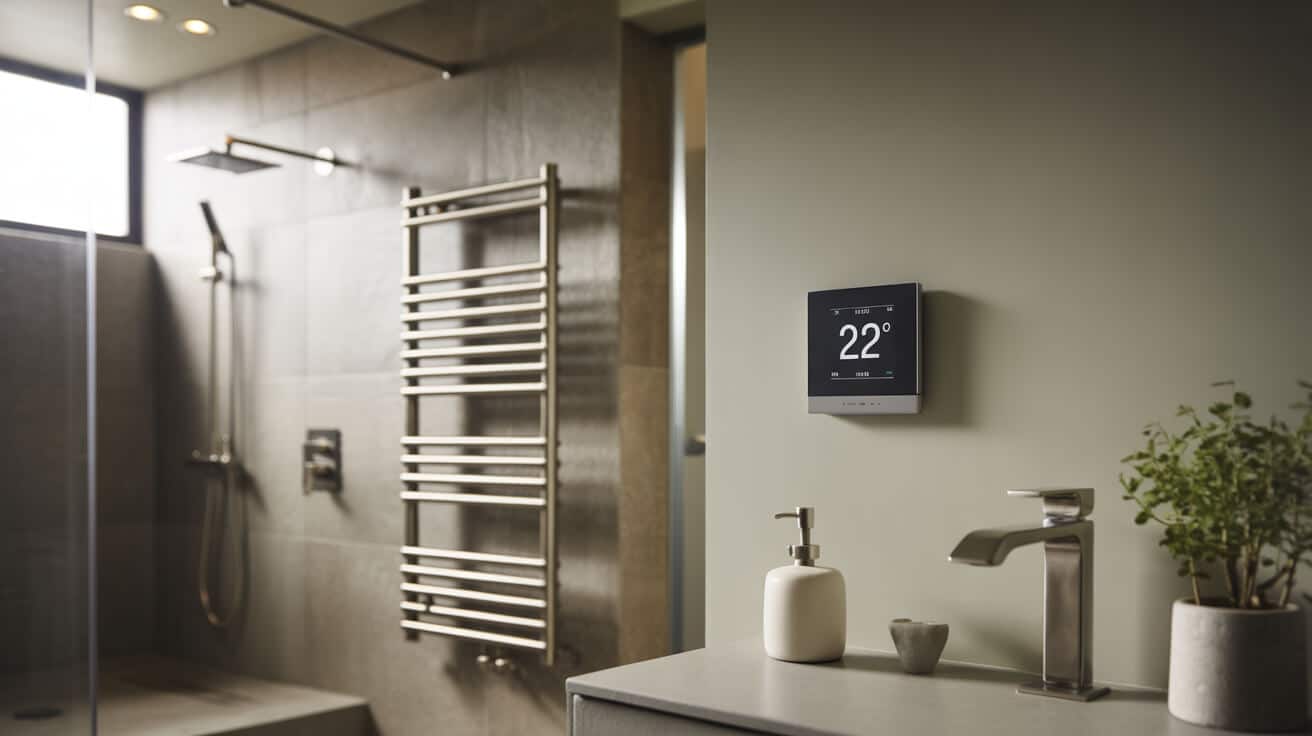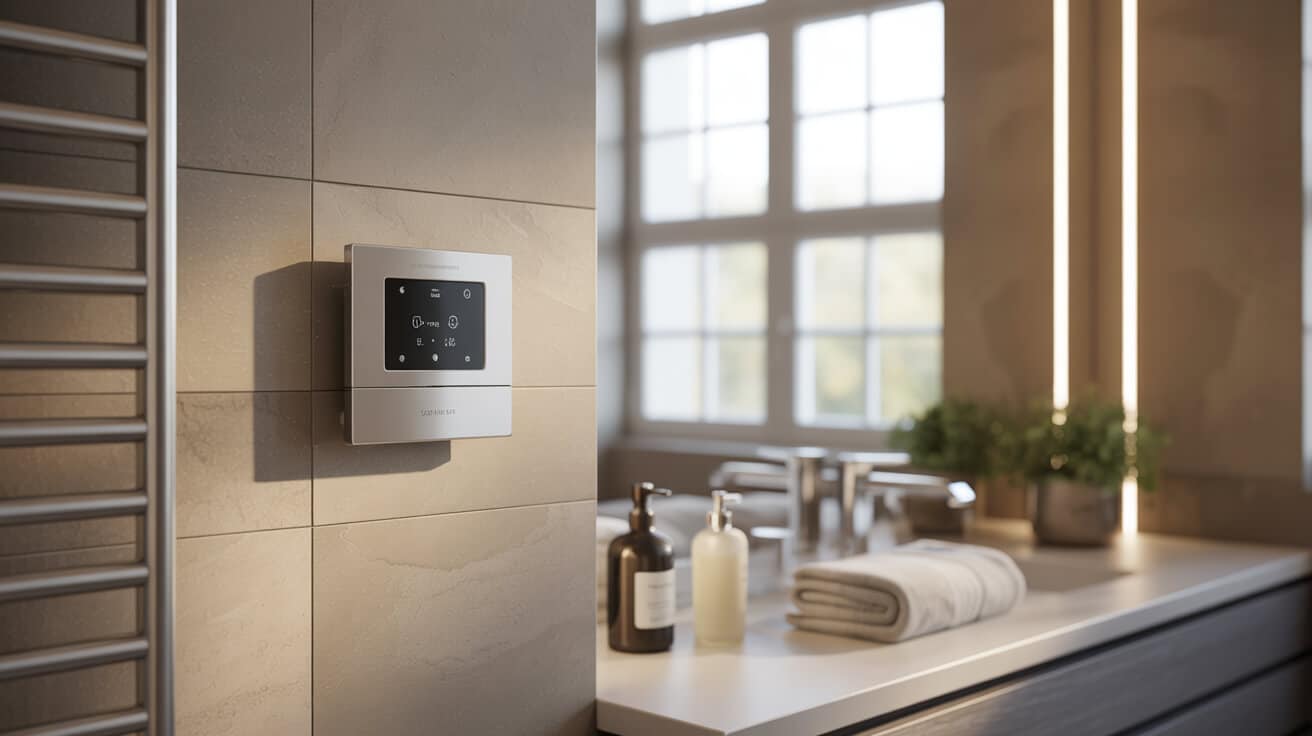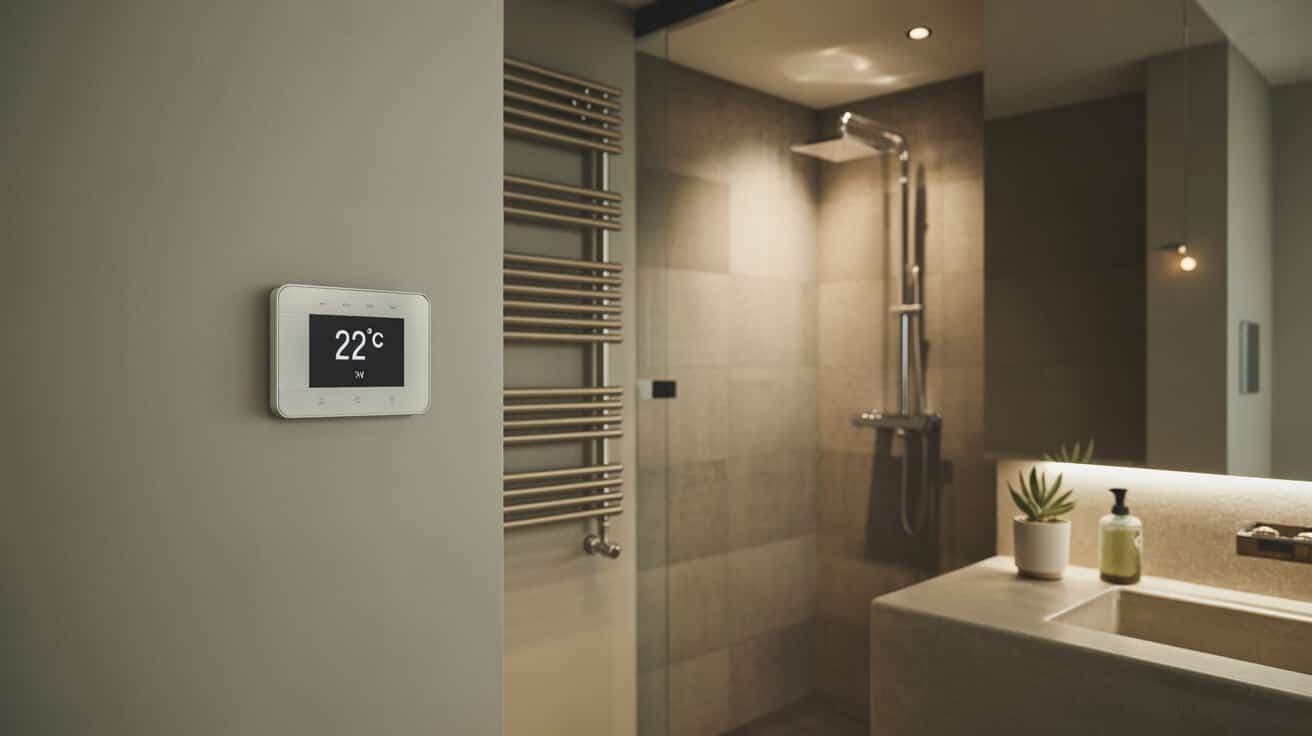Wireless programmable thermostats serve as dynamic interfaces between occupants’ environmental preferences and the underlying infrastructure of modern heating and cooling systems. By decoupling the user interface from the control relay, these devices support effortless installation in both legacy and new-build properties, enabling rapid deployment with minimal intervention in structural or surface finishes. Alongside digital scheduling logic, wireless thermostats allow end users, including property owners and facilities managers, to adjust, monitor, and analyse system performance with increased granularity—ranging from a single flat to entire property portfolios.
The application of these devices aligns with rising expectations for energy savings, emission reduction, and occupant comfort, being mandated or incentivized by energy efficiency regulations in many regions. Professional providers such as Plumbers 4U incorporate wireless programmable thermostats as an integral part of value-driven, security-conscious, and compliant heating upgrades. As remote diagnostics, app-based monitoring, and increasingly sophisticated user-centric design standards become ubiquitous, the role of wireless thermostatic controls expands from simple convenience to essential infrastructure for efficient, reliable, and auditable climate management.
Etymology or name origin
The designation “wireless programmable thermostat” unites technological, functional, and descriptive elements. The term “thermostat” arises from Greek roots—“thermo” (heat) and “stat” (standing or maintaining)—connoting a device that sustains a target temperature. “Wireless” highlights the absence of direct, physical communication paths, favouring electromagnetic signalling in the radio frequency spectrum, while “programmable” indicates the capability for user-authored time and temperature schedules. Alternate terminology includes “RF heating controller,” “digital heating control,” or for user-facing interaction, simply “remote scheduling stat.” Industry-specific discourse may abbreviate as “WPT,” “RF stat,” or employ brand or model codes, reflective of both commercial and regulatory references.
Overview / context
General background
The evolution of indoor climate regulation has advanced from manual, device-proximate adjustments to a landscape defined by distributed controls, adaptive feedback, and networked system logic. Plumbing and heating companies, including Plumbers 4U, have observed a shift towards interoperability, simplified deployment, and user empowerment as core facets of equipment design and service strategy. Wireless programmable thermostats emerge as a nexus point, meeting the dual imperatives of customer control and systemic efficiency without triggering disruptive or prohibitively expensive interventions in legacy architecture.
System architecture
A wireless programmable thermostat system typically comprises a user module—housing sensors, display, and control interface—and a receiver or relay module, sited at the heating system (e.g., boiler, underfloor manifold, zone valve, or pump relay). These modules communicate through purpose-configured RF, Zigbee, Z-Wave, or Wi-Fi-based protocols, often with fail-safe command acknowledgment and antifalsing mechanisms. Integration may extend to multi-zone environments, where a primary thermostat coordinates with subordinate TRVs (thermostatic radiator valves), smart actuators, or hybrid system gateways.
Role in contemporary plumbing and heating
Professional plumbing and heating providers increasingly recommend or specify wireless programmable thermostats as a default for system upgrades. By optimising placement, configuring schedules, and confirming compliance with regulatory benchmarks, trusted companies such as Plumbers 4U transform device installation from a product swap to a holistic comfort, efficiency, and future-proofing solution, tailored to your specific property type and occupancy pattern.
History
Origins
Thermostatic regulation originated with simple mechanical devices—typically bimetallic strips or bellows—reacting to ambient temperature by physically actuating switches or valves to trigger or terminate heating appliance operation. Early home environments relied on single-point control, requiring manual adjustment adjacent to the appliance.
Industrial emergence
The rise of centralised boiler systems and distributed hydronic heating catalysed a need for more nuanced, accessible controls. Programmable thermostats appeared in the latter twentieth century, typically as wall-mounted, wired units with analogue or early digital scheduling capabilities. Limitations in wiring, placement, and integration stymied further innovation until the regulatory and market push for scalable, retrofittable upgrades led to the experimentation with infrared and RF-based communication.
Contemporary evolution
Following regulatory imperatives like the UK’s Boiler Plus and broader energy performance mandates, wireless programmable thermostats became ubiquitous in both retrofit and new build markets. Innovations such as secure digital signalling, low-power wide-area networking, edge computing integration, adaptive learning algorithms, app-based configuration, and manufacturer-agnostic communication standards now support real-time data exchange, remote diagnostics, multi-zone control, and seamless user interaction from anywhere.

Concept / description
Core principles
A wireless programmable thermostat system divides functionality between two main components: the user module and the receiver relay. The user-facing module—mounted in a representative living or working space—houses an ambient temperature sensor, control buttons or touchscreen, visual display panel, and scheduling logic.
The relay or receiver module is physically connected to the heating system (often in the boiler housing or near the system manifold) and responds to control signals issued wirelessly by the user module. Upon detecting temperature deviations or schedule triggers, the user module transmits commands via encrypted or encoded RF, Zigbee, or comparable protocol. The receiver actuates a relay to start or stop the heating device with feedback mechanisms—visual, auditory, or via app interface—presenting system status to the user.
Structural elements
- Sensor suite: Integrated thermistors, digital temperature/air quality sensors.
- User interface: Capacitive buttons, LCD/LED or e-ink display, status indicators.
- Firmware/software: Embedded logic supporting multiple programmes, overrides, adaptive strategies.
- Receiver architecture: Mains/battery options; built-in safety overrides; signal repeaters for large or multi-storey buildings.
Communication protocols
- RF-based: 433 MHz, 868 MHz, or proprietary frequencies for local range.
- Zigbee/Z-Wave: For integration with broader home/building automation.
- Wi-Fi: For internet connectivity, app control, and remote diagnostics.
- OpenTherm: Digital modulating protocol supporting nuanced boiler control for compatible systems.
Variants may offer multi-zone control, remote sensors, and a choice of local (manual) or remote (app/web) schedule management.
Functionality / purpose / applications
Principle of operation
The central purpose is to maintain pre-set comfort levels while controlling energy consumption. By allowing programmable schedules—daily, weekly, per room or occupancy state—wireless thermostats reduce unnecessary heating operation. Sensors in the user module continuously monitor room temperature, triggering the relay when deviations from programmed ranges are detected. Some models support dynamic schedule alteration based on occupancy sensing, weather data, or user input, and provide rapid temporary override for immediate comfort requirements.
Practical applications
- Retrofit scenarios: Installation in buildings where running new control wires is impractical; preservation of finishes in listed properties.
- Multi-zone management: Differentiated scheduling for living, sleeping, and working spaces; integration with smart radiator valves or underfloor heating manifolds.
- Portfolio control: Property managers or landlords overseeing heating across large, diverse real estate assets.
- Remote access: Users travelling or with variable schedules can maintain system oversight and adjust settings from any location with network access.
- Integration with compliance and reporting systems: Providing logs or documentation to meet energy performance certification, rental property standards, or insurance requirements.
Classifications / types / variants
Functional categories
- Programmable: Devices scheduling temperature targets by day, week, or holiday modes, typically supporting a combination of time blocks and override levels.
- Smart/adaptive: Devices incorporating adaptive algorithms, learning patterns, and integrating ambient data (external weather feeds, occupancy sensors) for anticipatory adjustments.
- Digital/manual hybrid: Devices enabling both fixed scheduling and rapid, manual overrides.
- Single-zone/multi-zone: Devices designed for individual space control or capable of orchestrating integrated networks across several zones or properties.
Market adaptation
Market leaders (e.g., Honeywell, Drayton, Tado, Nest, Hive, Heatmiser) produce both general-purpose and system-specific variants with multiple configuration and installation options. Devices may be tailored for:
- Central heating vs. underfloor heating:
- Boiler type (combi, system, regular):
- Integration with smart radiator valves or third-party automation systems:
- Maximum zone/room support:
- Battery vs. mains power options:
- Protocol-specific compatibility:
Systems / tools / methodologies
Device ecosystem
- User module: Usually wall or table-top mounted; sometimes supports mobile phone docking or direct app integration.
- Relay/receiver box: Installed at the heating appliance or distribution point.
- Repeater modules: Employed to boost signal in large or complex buildings.
- Smart radiator valves: Enable granular per-radiator scheduling, often co-managed by the main thermostat.
- Remote sensors: Provide temperature readings from secondary spaces or problem zones.
Installation and configuration tools
- Physical tools: Electrician’s screwdriver, spirit level, cable tester, voltage detector, wire strippers, drill, and terminal block.
- Software/tools: Manufacturer configuration app; firmware update dongle; RF tester.
- Methodologies:
- Pairing process: Synchronise user and receiver modules—usually via button pushes or app interface.
- Range verification: Test wireless communication at all user locations and key zones prior to final mounting.
- Service steps: Commission system, train users, produce compliance or operation logs as necessary.

Stakeholders / entities involved
End users and property managers
- Homeowners: Seek personal scheduling autonomy, comfort, and energy savings; expect clear interfaces and minimal maintenance.
- Landlords/property managers: Demand remote monitoring, compliance documentation, tenant-friendly features, and authoritative support.
- Facilities directors: Prioritise scalability, security, automation, and multi-site integration.
Professionals and institutions
- Installers (heating engineers/plumbers): Responsible for regulatory-compliant installation, pairing, configuration, and documentation.
- Electrical contractors: Secure all mains-level and power-related integrations.
- Manufacturers: Develop, support, and certify devices; train resellers and professionals.
- Regulatory bodies/compliance officers: Set and monitor adherence to safety and energy laws (e.g., OFTEC, WRAS, Gas Safe Register, Building Regulations).
- Service companies (e.g., Plumbers 4U): Deliver full-cycle solutions—consultation, instal, documentation, aftercare, and compliance management.
Legal / regulatory / ethical considerations
Compliance frameworks
- Boiler Plus 2018 (UK): Mandates time and temperature control, often fulfilled by programmable thermostats.
- Building Regulations Part L (UK): Energy conservation code requiring adequate controls in all new and refurbished installations.
- Gas and electrical regulations: For installation, only registered professionals may connect to boilers or mains-powered elements.
- Rental property standards: Requirement for demonstrable, user-accessible heating controls; tenant right to reasonable climate and system documentation.
Safety and installation
- Regulatory approvals: CE, WRAS, and third-party certifications; anti-legionella, anti-limescale, and fail-safe test protocols for integrated systems managing hot water circuits.
- Data rights/privacy: Consent for data logging, protection of user schedule data, compliance with national data safety legislation where cloud/app services are employed.
Environmental impact
- Recyclability standards: End-of-life requirements for battery and electronic component recycling; integrated energy reporting to benchmark carbon reduction.
Performance metrics / data / measurements
Energy savings
- Typical reductions: Use of programmable thermostats yields heating energy savings of 8–18% depending on occupancy habits, insulation, and climate.
- EPC scores: Significant improvement in Energy Performance Certificate ratings, especially when combined with optimised scheduling and setback functions.
Reliability and range
- Wireless signal range: 20–30 metres typical (residential), depending on construction and site geometry; extended via repeaters in larger installations.
- User experience: Rated highly for installation simplicity, interface clarity, and flexible scheduling. Lower satisfaction often attributed to complex setup in multi-zone or legacy environments.
Maintenance and lifecycle
- Battery life: One to five years, contingent on model and usage; notification systems for low battery are now standard.
- Firmware updateability: Increasing support for over-the-air (OTA) updates, extending feature set and device lifespan.
Challenges / barriers / limitations
Operational and technical issues
- Signal interference: Wi-Fi congestion, thick masonry, metal structures, or proximity to high-wattage devices may limit range or reliability.
- Compatibility gaps: Some older boiler and system configurations lack accessible relay contacts or OpenTherm support, requiring bridging modules.
- Pairing/fault recovery: Restoration can demand specialist intervention if binding sequences fail or firmware corruption occurs.
Social and economic factors
- Upfront expense: Cost of device, installation, configuration, and potential system adaptation; recovery periods can vary.
- Usability gaps: Elderly or non-technically inclined users may require training, documentation, or simplified interface modes.
- Tenant/landlord friction: Scheduling and override rights must be clearly defined in lease or service agreements.
Philosophical/policy objections
- Data privacy: In remote-enabled systems, apprehension about unauthorised schedule access or behavioural profiling.
- Vendor lock-in: Proprietary systems can complicate handover or asset transfer, especially in commercial portfolios.
Impact / influence / legacy
Energy and regulatory contributions
- National policy outcomes: Wireless programmable thermostat adoption tracks with demonstrable decreases in per-property fossil energy use.
- Rental and commercial real estate: Integration has become a standard feature in many asset management contracts, streamlining compliance with evolving landlord duties and public reporting requirements.
- Service model transformation: Companies such as Plumbers 4U have adapted operations to deliver authoritative, cradle-to-grave lifecycle support for these devices.
End user and systemic benefits
- Comfort optimization: Regular, precise zone management; fast room recovery; superior customization.
- Maintenance and compliance: Offsite fault finding, remote reset, and standards-linked reporting.
- Culture of continuous improvement: Control infrastructure now viewed as an upgradable asset, not a static feature.
Future directions, cultural relevance, and design discourse
Advancing technology
Anticipated advances include broader use of AI-driven schedules, integration with city-level energy networks, expanded wireless mesh architectures, and push for universal protocol standards (e.g., OpenTherm, Matter).
Shifting norms
Property owners increasingly expect heating systems that are remote-controllable, customizable, and transparently auditable, while regulatory bodies and insurers may increasingly link compliant installation to favourable terms or risk rating.
Design and user advocacy
The future design discourse will centre on accessibility (multi-layered interfaces, voice control, direct tenant access), sustainability (lifecycle management, energy reporting), and data governance (transparent data use, real-time consent, robust privacy controls)—ensuring that systems continue to serve as assets not only to your comfort but to your overall cost management, security, and regulatory stance.

